Tools of the Design World: Bigcommerce
Bigcommerce is a popular alternative to WordPress right now, but is it actually worth it for business owners and entrepreneurs? You might be surprised by what Bigcommerce lacks in terms of versatility and features. Let’s break down what Bigcommerce is and why WordPress takes the cake in terms of CMS and e-commerce platforms. What is Bigcommerce? Bigcommerce is an e-commerce CMS solution that makes it possible for business owners and entrepreneurs to build an online store and start selling their products immediately. It’s a SaaS product– so even though you pay a monthly fee to use the Bigcommerce product, you technically won’t own the software. This platform is fairly popular because it comes with quite a few bells and whistles. You can use a ton of customizable templates to design the look of your online store, and you can use it in order to sell physical goods, digital goods, and services. You can even use Bigcommerce’s marketing tools as well. Specifically, Bigcommerce offers some useful features: Twelve free templates Unlimited items to sell Image optimization Some SEO features CMS functionality Integration with e-mail services like Mailchimp HTML/CSS editing Drag-and-drop page builder Paypal and other payment gateway integration Unlimited accounts for staff and admin These all seem like excellent features, right? Unfortunately, when you look at how little you can customize and control your shop (as well as how expensive the platform is) it becomes clear that WordPress may still be the better option. How Much Does Bigcommerce Cost? The company offers four different pricing plans, all of which are on a month-to-month basis. Standard: $29.95 per month. Plus: $79.95 per month. 10% off for annual payments. Pro: $299.95 per month. 10% off for annual payments. Enterprise: Price varies depending on personal requirements. All current plans include a free fifteen-day trial as well. When is Bigcommerce Used? Bigcommerce is typically used by people who don’t know very much about coding, web design, and other tech-savvy aspects of launching an online store. Unless you’re able to develop your own online shop from the bottom up, you’ll feel the pressure to opt for a hosted solution like Bigcommerce to run your shop. This could be a big mistake– Bigcommerce has its use cases, but we firmly believe that WordPress is the superior platform. Why WordPress is Better Because Bigcommerce is a hosted online store and website-building platform (not unlike Shopify, Squarespace, Jimdo, etc.), if the platform ever shuts down or changes significantly, you’ll be stuck with the responsibility of migrating your entire store to a new platform. With WordPress, you’re in much more control. You can download and customize the plugins you want to use, and there are thousands to choose from. You can control so much more about your online shop, website, and blog for marketing purposes that Bigcommerce simply can’t do. Just as well, Bigcommerce doesn’t offer a mobile application to manage your store and lacks versatility overall. WordPress is extremely robust, albeit difficult to get the hang of if you are not used to the platform or a developer. Overall, Bigcommerce’s targeted aim is to be an easy one-stop-shop for businesses and entrepreneurs, but it simply is not a highly customizable and controlled tool like WordPress is. WordPress is also better for SEO and boasts a lower cost. Even if you’re not a seasoned developer, once you get past that learning curve, WordPress is definitely worth it! We’re a top web development firm as listed by DesignRush. How was our guide to Bigcommerce? Let us know what you think on social media. Make sure to tag us! Author Mr. Peterman View all posts


